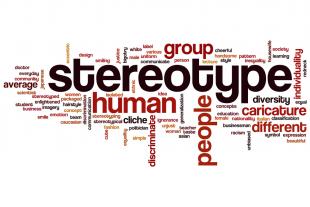The world is filled with a host of positive and negative stereotypes. Most of us are familiar with various stereotypes and have even stereotyped ourselves. However, more recent social science studies have proven that stereotypes can materialize to the point where they can actually hinder the daily lives of employees. Stereotype threat, though hard to identify at times, is active and alive in many workplace settings whether we know it or not. Read below to learn more about how stereotype threat can affect your business.
Definition
What is stereotype threat? Claude Steele, professor at Stanford University and famous for his book Whistling Vivaldi, defined stereotype threat as, “a feeling of anxiety in a situation where a person has the potential to conform to a negative stereotype about his or her social group, whether that is race, gender, socioeconomic class or any other aspect of identity.” For example, a 2002 study conducted by Professors Kray, Galinsky, and Thompson showed that women pursuing an MBA faced stereotype threat related challenges in mixed gender negotiations. The presence of a negative stereotype in a particular industry can contribute to lower performance. Other examples of stereotype threat include African Americans’ low scores on standardized tests, inequality of women in leadership positions, and low representation of ethnic minorities in CEO positions.
Causes
What causes stereotype threat? Steele noted that stereotype threat can be triggered by low minority representation and feelings of inferiority inherent in certain types of organizational structures. In workplace settings, stereotype threat can prevent employees from applying for jobs, from asking for promotions, and from performing well within an organization. People challenged with stereotype threat recognize that there are negative expectations placed on them. Consequently, they use up cognitive resources to either prove or deny negative preconceived expectations. Work evaluations with little holistic metrics is one example of an organizational structure that can trigger stereotype threat along with undermining comments made by coworkers.
Effects
Stereotype threat does not always have to be overt and pervasive. Studies have shown that simply knowing that fact that it exists can reduce performance. Moreover, studies from the American Psychological Association have demonstrated that stereotype threat can also lead to higher levels of disidentification and disengagement. However negative impacts of stereotype threat can also include:
-
Anxiety
-
Reduced effort
-
Lower creativity, flexibility, speed
-
Reduced working memory capacity
Ways to Combat Stereotype Threat at Work
There is no clear way to eliminate stereotype threat at work. However, several studies have suggested the following:
-
Enhance job training to make people feel prepared and valued
-
Positively shape the background information about a task
-
Stress the importance of effort and motivation along with results
-
Watch out for undermining signals
Stereotype threat can be tricky to identify and hard to fix. There are institutional and historical forces that contribute to the presence of stereotype threat. However, making sure that your business is aware of stereotype threat and taking steps to reducing its detrimental effects on employees can make a significant difference not only in morale, but also productivity.




